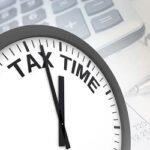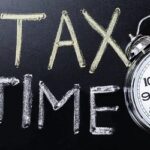Presumptive taxation is a tax system that uses indirect means to determine an individual’s tax liability instead of traditional rules based on their financial records. This method assumes that an individual’s income is at least equal to the amount resulting from applying the indirect method, hence the term “presumptive.” By implementing presumptive taxation, taxpayers can pay their taxes based on a presumed income, without having to estimate their income by subtracting their expenses from their revenue. Instead, they can pay a percentage of their total revenue as tax.
Adopting presumptive taxation or an estimated income scheme allows individuals to declare their income at a fixed rate. This relieves them from the cumbersome task of maintaining financial records and getting their accounts audited. The scheme is particularly helpful for small businesses, startups, and individuals who do not have the resources to keep detailed financial records or hire an accountant.
Presumptive taxation is often used by governments to simplify the tax system and increase tax compliance. It can reduce the administrative burden for tax authorities and taxpayers, as well as help to broaden the tax base. Presumptive taxation is typically used for certain types of businesses, such as small retailers, restaurants, and transport operators, whose income can be difficult to track due to the nature of their business.
Under presumptive taxation, the tax liability of an individual is based on a predetermined percentage of their revenue. This percentage may vary depending on the type of business and the prevailing tax laws. For example, a transporter may be required to pay tax based on the number of vehicles they operate, while a small retailer may pay a percentage of their total sales.
While presumptive taxation can simplify the tax system, it may not always be accurate in determining an individual’s actual income. In some cases, the predetermined percentage may be too high or too low, resulting in overpayment or underpayment of taxes. It is therefore important for individuals to assess their income and determine whether the presumptive taxation method is suitable for them.
The Estimated Income Scheme, also known as presumptive taxation, is a tax system implemented by the Indian government to achieve several objectives.
(i) Firstly, it promotes the ease of doing business in the country by simplifying the tax system for small businesses.
(ii) Secondly, it brings small businesses into the tax net, increasing the overall tax revenue for the government.
(iii) Finally, it reduces the administrative cost of tax collection for the government, making the process more efficient.
By adopting the Presumptive Taxation Scheme, small businesses can declare their income at a prescribed rate and are relieved from maintaining detailed financial records and getting their accounts audited. This helps them save time and resources that can be better utilized for business growth. For the government, the scheme streamlines the tax collection process, reducing administrative costs and increasing tax compliance.
Overall, the Estimated Income Scheme is a win-win situation for both business entities and the government, making it a popular tax system for small businesses in India.
Section 44AD of Income Tax Act:
According to 44AD if any eligible assessee carrying on eligible business opted for this provision than the provisions from 28 to 43C are not applicable for the computation of the Income from Profit or Gains from the Business or Profession. Percentage of profit or gains specified in 44AD will be deemed as Income from Business or Profession.
Who is eligible Assessee?
The definition of an eligible assessee for Section 44AD is provided in the Explanation clause (a) of the section. According to Sub-clause (i) of clause (a), an eligible assessee refers to a resident assessee who is either
(i) an individual,
(ii) a Hindu undivided family, or
(iii) a partnership firm (excluding limited liability partnership firms as defined under the LLP Act, 2008).
Additionally, as per Sub-clause (ii) of clause (a), an individual, HUF, or a partnership firm who is a resident, cannot claim certain deductions under chapter III of the Act (sections 10A, 10AA, 10B, 10BA) relating to units located in free trade zones, hardware and software technology parks, etc. They also cannot claim deductions under Chapter VI-A Part-C, which pertains to deductions in respect of certain incomes.
Following Taxpayer/Assessee are not allowed to claim Section 44AD:
- Individual/HUF who is Non-Resident
- Association of Person
- Firm having non-resident status
- A local Authority
- Any type of Company
- Co-operative Society
- LLP both resident and non-resident
- Artificial Juridical person
- An Individual / HUF / a Partnership Firm who is a resident claiming deduction under chapter III of the Act section10A,10AA,10B,10BA relating to units located in FREE Trade Zone, Hardware & Software Technology Park etc.
- An Individual / HUF / a Partnership Firm who is a resident claiming deduction under Chapter VI-A Part-C (deductions in respect of certain Incomes)
What is Eligible Business?
Explanation 1 clause (b) of Section 44AD defines eligible businesses for the purposes of the section. An eligible business is one that
(i) is not engaged in the business of plying, hiring, or leasing goods carriages referred to in Section 44AE, and
(ii) has total turnover or gross receipts that do not exceed 2 crore rupees in the previous year.
This means that businesses other than those engaged in the specified carriage activities and whose turnover or receipts fall below the specified threshold can avail of the presumptive taxation scheme under Section 44AD. This simplifies the tax compliance process for eligible businesses and reduces their administrative burden, especially for small businesses and startups.
Whether section 44AD is applicable to Derivative transaction:
Section 44AD does not exclude derivative transactions, which means that a person can choose to avail of the section if their turnover is less than Rs. 2 crores. However, if their turnover exceeds Rs. 10 crores and their transactions are mostly carried out through the banking channel, they cannot opt for Section 44AD and must get their accounts audited.
It is worth noting that the section does not provide any specific provisions for the taxation of derivative transactions. However, profit and gains from derivative transactions can be declared at 6% of the total turnover, since such transactions are typically carried out through the banking channel. It is important to note that no deductions for expenses can be claimed in such cases.
While opting for Section 44AD may seem like an attractive option for small business owners, it is crucial to understand the implications of doing so. The section offers a simplified tax calculation process, but it also comes with certain limitations. For instance, a person who opts for this section cannot claim any deductions for expenses related to the business. Therefore, it is essential to weigh the pros and cons before making a decision on whether to opt for this section or not.
If a person opts for section 44AD in case of derivative transactions, there are some disadvantages to consider. Firstly, they cannot opt-out of the presumptive rate of tax for the next five years from the previous year in which they opted for it. Secondly, if they declare profit under section 44AD, they cannot carry forward any losses from derivative transactions. This means that if they suffer any losses from derivative transactions, they cannot set them off against future profits. It is important for taxpayers to carefully evaluate their options before choosing the section 44AD scheme, especially in the case of derivative transactions.
Section 44AD applicability on Banking and Non-Banking Transactions:
Sub-section (1) of section 44AD provides for a presumptive tax rate of 6% of total turnover or gross receipts, provided the amount is received through specific modes such as account payee cheque, account payee bank draft, electronic clearing system, or other electronic modes prescribed by the government. Rule 6ABBA lists the following electronic modes for the purposes of the proviso to sub-section (1) of section 44AD: credit card, debit card, net banking, IMPS, UPI, RTGS, NEFT, and BHIM Aadhar Pay.
For payments received through non-digital transactions, the presumptive rate of income is 8% of total turnover or gross receipts. However, if the receipts are received through digital transactions or banking channels before the due date of return filing under section 139(1), the presumptive rate of income can be declared at 6% of the turnover.
It is important to note that once a taxpayer opts for the presumptive rate of tax, they cannot opt out for the next five years. Furthermore, if a taxpayer declares profit under section 44AD, they cannot carry forward any loss from derivative transactions. While section 44AD is a beneficial provision for small businesses with turnover below Rs. 2 crore, it is important for taxpayers to understand its provisions and implications before making a decision.
According to the cases of Commissioner of Income-tax vs. Inter Continental Constructions [2015] 61 taxmann.com 15 (Andhra Pradesh and Telangana) and Sudhakar Pandey vs. ACIT, Mirzapur, U.P, [2022] 135 taxmann.com 290 (Allahabad – Trib.), it has been ruled that if the net profit of the assessee is estimated, then no separate claim of depreciation is allowable. If the claim of depreciation is made in such a scenario, it would not be in accordance with the provisions of law under the Income-tax Act.
Discloser of sundry debtors, sundry creditors, stock-in-trade and cash balance in the ITR:
When an assessee opts for presumptive rate of income, the prescribed return of income form includes a section for reporting the total amount of sundry debtors, sundry creditors, stock-in-trade, and cash balance as at the end of the previous year. The assessee is not required to submit a balance sheet or a profit and loss statement, nor can they provide any additional information about their assets and liabilities.
However, if the Assessing Officer rejects the return of income and chooses to scrutinize the case, the assessee must provide satisfactory explanations as to the source of the sundry debtors, stock-in-trade, and cash balance. If these amounts are borrowed from third parties or any other sources, the nature and source of the same must also be explained. Failure to provide satisfactory explanations can result in the provisions of sections 69 to 69C being applied to the assessee’s case.
In other words, even if an assessee opts for presumptive rate of income and is not required to provide a balance sheet or profit and loss statement, they must still be prepared to provide evidence and explanations for the sources of their assets and liabilities if their return of income is scrutinized.
Records can be maintained to calculate total turnover or gross receipts
Under section 44AD and 44ADA, a taxpayer is not required to maintain any books of accounts or specified records to calculate total turnover or gross receipts. However, the burden of proof of the turnover or gross receipts lies with the taxpayer. Therefore, it is advisable for the person opting for the presumptive rate of income to maintain certain records to substantiate the source of their income.
The records that an assessee may maintain include sale invoices, sales register, and complete records of receipts from customers, whether received in cash or through digital channels. The records of payments made towards expenditure, whether in cash or through digital channels, should also be maintained. Additionally, details of sundry debtors and sundry creditors as on 31st March, as well as the value of stock held as on 31st March and cash balance on that date should be kept.
It is important to note that the records mentioned above are not exhaustive, and any other records deemed necessary may also be maintained. If the Assessing Officer selects the taxpayer’s case for scrutiny and is not satisfied with the information provided, the taxpayer will need to explain the source of sundry debtors, stock-in-trade, and cash balance. If the amount is from borrowings from third parties or any other source, the nature and source of the same must be explained. If the taxpayer fails to provide a satisfactory explanation, provisions of sections 69 to 69C of the Income Tax Act will be applicable.
Section 44AD allows carrying forward of depreciation and business loss.
When a taxpayer opts for section 44AD, the income for that previous year will always be a profit, so there cannot be any loss carry forward from that year. However, if section 44AD is not opted for a particular year, there can be a depreciation or business loss that can be carried forward to the year when section 44AD is opted.
For instance, if a taxpayer opts for section 44AD for the first time in AY 2020-21, and in the previous years, books were maintained, and profits or losses were offered on an actual basis, then there can be a depreciation or business loss that can be carried forward to AY 2020-21. In such a case, the depreciation or business loss can be adjusted with the presumption rate of income, and the remaining amount can be carried forward as per the provisions of Chapter VI of the Income-tax Act.
It’s important to note that the non-obstante clause of section 44AD is not applicable to Chapter VI, except for Chapter VI A Part C. Therefore, any loss or depreciation that arises in a year where section 44AD is not opted can still be carried forward and utilized in the subsequent years when the taxpayer chooses to opt for section 44AD.
Advance Tax on Presumptive Taxation Scheme
Starting from April 1, 2017, individuals who opt for the presumptive taxation scheme under Section 44AD are subject to advance tax provisions. They must pay advance tax by March 15 of the financial year, failing which they will be liable to pay interest under Section 234B and 234C.
Who Cannot opt for Presumptive Taxation Scheme Under Section 44AD
Section 44AD cannot be opted by a person engaged in the following businesses:
(i) a profession mentioned in sub-section (1) of section 44AA,
(ii) earning commission or brokerage income, or
(iii) carrying out any agency business.
Can partner who receives salary and interest from a firm can opt for section 44AD?
Remuneration and interest from the partnership firm cannot be treated as gross receipt of the assessee. Therefore, salary and interest received from a firm can’t be considered as turnover or gross receipts under section 44AD.







